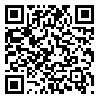BibTeX | RIS | EndNote | Medlars | ProCite | Reference Manager | RefWorks
Send citation to:
URL: http://tbj.ssu.ac.ir/article-1-1272-en.html
Assessment of exposure to whole body vibration in Yazd city taxi drivers Samoori-Sakhvidi F (MSc)* Barkhordari A (PhD)** Dehghani A (PhD)*** Tavakoli-Manesh S (MSc)**** *Corresponding Author: MSc Student in Department of Occupational Health, Shahid Sadoughi University of Medical Sciences, Yazd, Iran ** Professor, Department of Occupational Health, Shahid Sadoughi University of Medical Sciences, Yazd, Iran *** Professor, Department of Statistics and Epidemiology, Shahid Sadoughi University of Medical Sciences, Yazd, Iran **** MSc Student in Department of Occupational Health, Shahid Sadoughi University of Medical Sciences, Yazd, Iran Abstract Introduction: One of the most common sources of whole body vibration are vehicles in which the driver is exposed to vibration caused by the vehicle and the road. Including the people who continuously exposure to whole-body vibration can be noted to taxi drivers. Taxi drivers during their work shift Encountered with numerous deleterious effects such as noise, vibration, air pollution, and psychological stress and long work shifts. Long-term exposure to whole body vibration in the taxi drivers can communicate with adverse effects such as reduce perception, annoyance, disturbance of vision and fine motor tasks, spinal cord injury, damage to the digestive and reproductive systems. The purpose of this study was cross - sectional study of whole body vibration exposure in Yazd city taxi drivers. Methods: This study was designed to evaluate exposure to whole body vibration in taxi drivers, vibration measurement Was carried out in 80 taxi from 3 vehicle (Samand-Peugeot 405 and Pride)in 3 mileage groups, with 63 male drivers and 17 female drivers. parameters Including the vibration Weighing the acceleration frequency (rms), Equivalent acceleration (Aeq) and vibration dose)VDV) in 3-axis was recorded. The results obtained were compared with the values recommended by the standard (ISO 2631-1). Results: The mean (rms) acceleration in the Z-axis is equal to .45 m/s2 that was more than out of the axes X, Y. (rms) acceleration values in the range of potential risks to health. The average Aeq acceleration in the Pride was obtained. 62 m/s2, which was more than 2 cars, although statistically significant difference was not found between the types of vehicles. But average Aeq acceleration of the vehicle was located in the zone caution health. Average vibration dose for all vehicles were less than limits recommended in the ISO 2631 standard. The results showed that increasing the mileage and life of the car and also traffic during driving can increase exposure to vibration in the taxi drivers. Conclusion: The results suggest that taxi drivers are exposed to significant amounts of whole body vibration. Therefore, we must take measures to reduce the adverse effects of vibration on these people.
Received: 2015/01/10 | Accepted: 2015/02/14 | Published: 2016/11/21
| Rights and permissions | |
 |
This work is licensed under a Creative Commons Attribution-NonCommercial 4.0 International License. |





